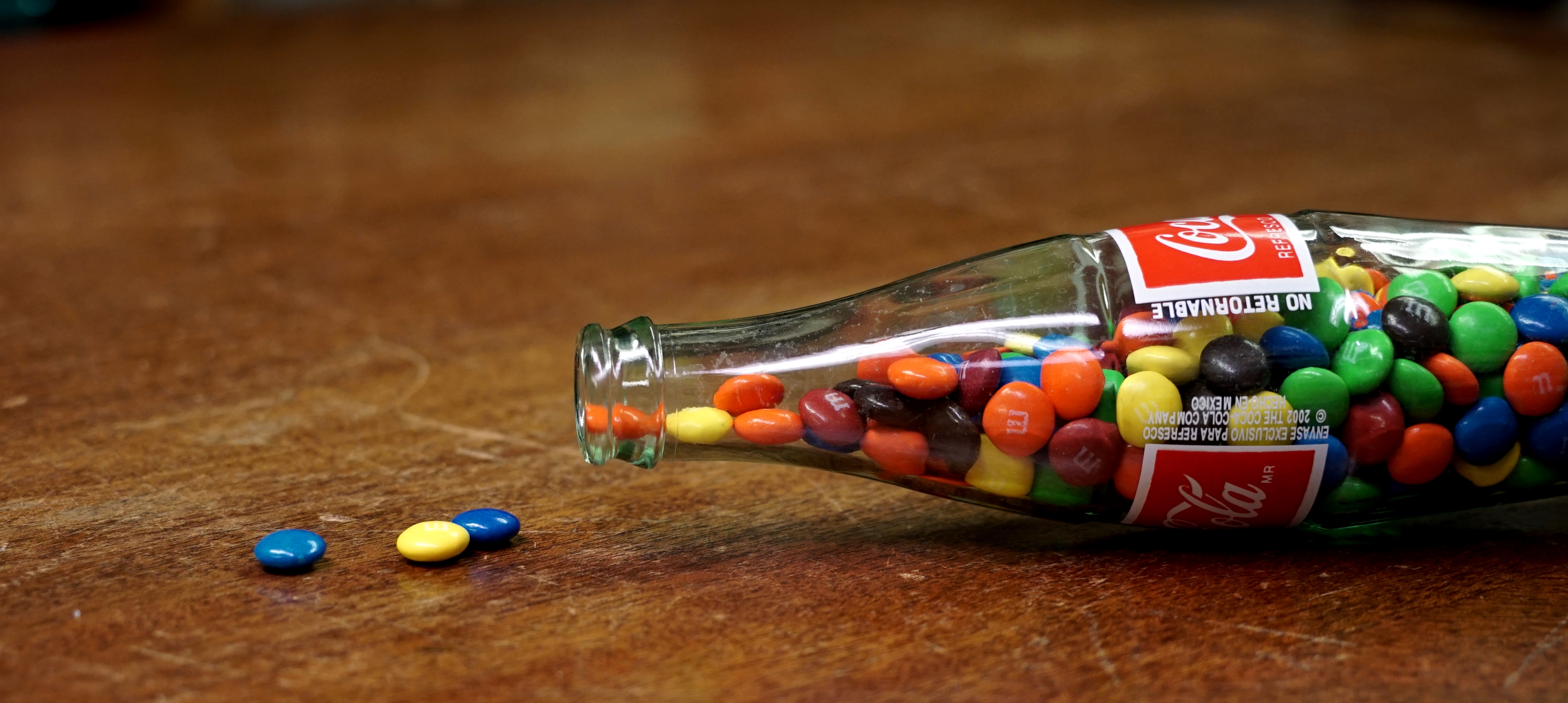
“I need you all to suspend your disbelief. This bottle is not full of M&Ms … this bottle is full of 30 million bison. Could you do me a favor and pour three of them out onto your hand, please?”
Given that the prop in question is visible even from the back row of the campground amphitheater, this usually gets a laugh. It’s surprisingly effective to imagine the near-extinction of a species in terms of small, candy-coated pieces of chocolate.
"Can I have a round of applause for the genetic bottleneck?"
For bison, however, this phenomenon was deadly serious. A real-life genetic bottleneck — when some natural or manmade event catastrophically reduces the size of a population — can change the very nature of a species. For bison, this catastrophe took the familiar form of guns, germs, and steel: Guns, in the hands of white sport hunters and tourists who killed the animals by the millions, some simply leaving the carcasses where they lay; germs, which transmitted new diseases from domestic cattle to wild bison herds; and steel, laid as rails for the first transcontinental railroads. Trains rolled west bearing waves of new settlers and returned east laden with millions of pounds of bison hides, meat, and bones. By the year 1887, only a few hundred remained of the 30 million bison that had filled the species' genetic bottle at the beginning of the century; scientists believe that all living bison are descended from less than 100 individuals. (A mathematically correct demonstration would have saved just one one-thousandth of an M&M from the full bottle.)
What impact does this have on a species? Imagine for a moment the chaotic streets of downtown New York City—a diverse and eclectic assortment of different races, cultures, languages, appearances, and lifestyles. (Instead of M&Ms, the bottle is now full of 8.5 million New Yorkers.) Now choose 100 people at random from this colorful milieu, leaving the rest to some nameless fate. How much of that diverse community would be reflected in the survivors? What would the city look like 20 generations later, if the majority of your picks happened to be tall? Red-haired? Brown-eyed?
Variety may be the spice of life, but it’s also essential to survival. The lower the diversity of genetic material (DNA) in a population, the higher the risk of disease and inbreeding. In time, these effects can be fatal. Genetic diversity in the Texas State Bison Herd (descended from the famous Goodnight herd, discussed here) dropped so low that in 2003, just one calf in 15 pregnancies survived to its second year.
Ironically, bison’s oldest surviving predator, the grey wolf, faces the same threat. The species has lost 43% of its genetic diversity in the last two centuries. And the disappearance of one unique group of wolves coincided with the bison’s near-extinction, suggesting that although the bison eventually recovered, an entire “ecotype” of wolves specialized to hunt them never did. As the preservationist John Muir observed, “When we try to pick out anything by itself, we find it hitched to everything else in the Universe.”
We cannot travel backwards in time (yet) to recover the genetic diversity we had before the 1880s. But there are steps we can take to protect the diversity represented by our three remaining M&Ms. Across the country, scientists are identifying unique genes to preserve, maintaining larger herds where possible (larger herds are less susceptible to random loss of genes through genetic drift), and moving individuals between parks ward off inbreeding.
But even our best attempts to replicate the natural processes that produced this diversity in the first place often fall short. Bison in Theodore Roosevelt National Park are some of the least genetically diverse in the Department of the Interior, as a result of repeated genetic bottlenecks. And like all living things, our bison need that genetic diversity in order to adapt to new changes and challenges in their environment—and survive in the long term.
The research we're doing here in the park aims not just to measure that diversity, but to compare the bison of the present to those of the past. Ancient bones and teeth found in the area provide a measuring stick against which we can hold modern bison. How much historic diversity existed? How much remains? And how will the actions we take today determine how those few surviving M&Ms will refill bison’s genetic bottle in the next century (or millennium)?
Return to the Bison Blog home
